The Strength of Rail Vehicles Transported by a Ferry Considering the Influence of Sea Waves on Its Hull
Abstract
:1. Introduction
2. Review of the Research and Literature
3. The Main Tasks and the Objective of the Research
- Modelling the dynamic load of vehicles when transported by train ferries with consideration of the effect of a sea wave on the ferry body;
- Calculating the basic strength parameters for the main-bearing body structure of an open railway wagon when transported by a train ferry;
- Performing an experimental study of the strength of the open wagon body during its transportation on a railway ferry;
- Offering measures for improvements in the open wagon main-bearing structure to ensure its reliable securing on the train ferry and;
- Studying the containers’ stability on the roll trailer located on the train ferry deck with consideration of the effect of a sea wave on the ferry body.
4. Creating a Computational Model
- A device for measurement of deformation gauges of construction and machine-building structures of VDC—1 (Figure 13); VDC—1 removes and converts the received information into values of physical quantities with subsequent display of information about the measured readings of the object, in this case—deformation. The device has an input polling time of no more than 1 s and one input (channel). The DC supply voltage range is 10.5–30 V. The maximum power consumption of the device is no more than 2 VA. The kit includes removable terminal blocks for easy installation and dismantling of the device. VDC—1 has the ability to receive information from strain gauges with different technical characteristics;
- A universal tester;
- Wire tension resistors with a base of 20 mm and resistance of 124 Ohms;
- A set of mounting wires for connecting the strain gauge;
- A computer for the purpose of storing the data registered during the study (Figure 14).
5. Discussion of the Results of the Research
6. Conclusions
- The presented research focuses on modelling the dynamic loads of railway vehicles during their train ferry transportation with consideration of the effect of sea waves to its body. The maximum acceleration, which occurs at a wave angle regarding the train ferry body of 0°, is calculated at the value of 3.6 m/s2.
- The study presents the determination of the main strength characteristics of the main-bearing structure of the open freight wagon when transported by train ferries. The maximum equivalent stresses in the open freight wagon body are up to the value of 438 MPa and are concentrated in the towing shackle; thus, they exceed the admissible values by 21%. The maximum displacements occur in the sidewall of the open car body, equal to 15 mm. Thus, this scheme to secure the railway wagon on the deck of a train ferry is inadmissible.
- Additionally, the strength analysis of the open wagon body mounted on the railway ferry deck was carried out by means of experimental tests. For these purposes, the method of electric strain measurement was applied. In this case, strain gauges with a base of 25 mm and resistance of 124 Ohms were used. Based on the experimental results obtained, verification was carried out. The experimental tests have revealed that the Fisher’s criterion actual value was Fp = 5.11, which is within reproducibility variance Sy = 6.94 and adequacy variance Sad = 35.42. This value is lower than the value of the criterion Ft = 5.41 introduced in the table. Thereof, the hypothesis of adequacy is not denied. The approximation error was about 2%.
- Based on the performed research, the measures of improving the main-bearing structure of the open freight wagon for providing its secure transport on the train ferry were suggested. Particularly, it includes the mounting of special fastening units on the bolsters of the cars. The results of performed calculations demonstrate that the maximal values of the equivalent stresses are concentrated in the radial lug of the unit and amounted to a value of 304 MPa. Thus, these values have not exceeded the permissible values. At the same time, the achieved values are lower by 30% than those in the standard fastening scheme. Thereof, the strength of the one wagon main-bearing structure is preserved.
- The conducted research was also focused on the investigation of the stability of a container, which is placed on a roll trailer located on the train ferry deck. The impact of a sea wave to the ferry body is considered. It is found that the stability of the investigated container placed on the roll trailer, with consideration of the standard interaction scheme, is ensured at rolling angles up to a value of 20°.
7. Patents
Author Contributions
Funding
Institutional Review Board Statement
Informed Consent Statement
Data Availability Statement
Acknowledgments
Conflicts of Interest
References
- Iris, C.; Christensen, J.; Pacino, D.; Ropke, S. Flexible ship loading problem with transfer vehicle assignment and scheduling. Transp. Res. Part B Methodol. 2018, 111, 113–134. [Google Scholar] [CrossRef]
- Puisa, R. Optimal stowage on Ro-Ro decks for efficiency and safety. J. Mar. Eng. Technol. 2021, 20, 17–33. [Google Scholar] [CrossRef]
- Sun, X.; Wanga, S.; Wang, Z.; Liu, C.; Yin, Y. A semi-automated approach to stowage planning for Ro-Ro ships. Ocean Eng. 2022, 247, 110648. [Google Scholar] [CrossRef]
- Iris, C.; Pacino, D. A survey on the ship loading problem. In Proceedings of the 6th International Conference on Computational Logistics, ICCL, Delft, The Netherland, 23–25 September 2015. [Google Scholar]
- Silva, R.; Ribeiro, D.; Bragança, C.; Costa, C.; Arêde, A.; Calçada, R. Model Updating of a Freight Wagon Based on Dynamic Tests under Different Loading Scenarios. Appl. Sci. 2021, 11, 10691. [Google Scholar] [CrossRef]
- Wei, C.; Kaiwu, C.; Fukang, Q.; Jin, X. Study on Fatigue Strength and Life of Freight Car Frame after Making Holes. In Proceedings of the International Forum on Construction, Aviation and Environmental Engineering-Internet of Things, IFCAE-IOT 2018, Guangzhou, China, 11–13 May 2018. [Google Scholar]
- Šťastniak, P.; Smetanka, L.; Moravčík, M. Structural Analysis of a Main Construction Assemblies of the New Wagon Prototype Type Zans. Manuf. Technol. 2018, 18, 510–515. [Google Scholar] [CrossRef]
- Slavchev, S.; Stoilov, V.; Purgic, S. Static Strength Analysis of the Body of a Wagon, Series Zans. J. Balk. Tribol. Assoc. 2015, 21, 38–57. [Google Scholar]
- Liu, W.; Wang, Y.; Wang, T. Box Girder Optimization by Orthogonal Experiment Design and GA-BP Algorithm in the Gondola Car Body. Processes 2022, 10, 74. [Google Scholar] [CrossRef]
- Shukla, C.P.; Bharti, P.K. Study and Analysis of Doors of BCNHL Wagons. Int. J. Eng. Res. Technol. 2015, 4, 1195–1200. [Google Scholar]
- Buchacz, A.; Baier, A.; Płaczek, M.; Herbuś, K.; Ociepka, P.; Majzner, M. Development and analysis of a new technology of freight cars modernization. J. Vibroeng. 2018, 20, 2978–2997. [Google Scholar] [CrossRef]
- Haraka, S.S.; Sharma, S.C.; Harsha, S.P. Structural dynamic analysis of freight railway wagon using finite element method. In Proceedings of the 3rd International Conference on Materials Processing and Characterisation (ICMPC 2014), Seoul, Republic of Korea, 4–8 August 2014. [Google Scholar]
- Chao, C.; Mei, H.; Yanhui, H. Study of Railway Freight Vehicle Body’s Dynamic Model Based on Goods Load Technical Standards. In Proceedings of the International Workshop on Information and Electronics Engineering, Harbin, China, 10–11 March 2012. [Google Scholar]
- Lovskaya, A. Assessment of dynamic efforts to bodies of wagons at transportation with railway ferries. East.-Eur. J. Enterp. Technol. 2014, 3, 36–41. [Google Scholar]
- Fomin, O.; Lovska, A.; Kučera, P.; Píštěk, V. Substantiation of Improvements for the Bearing Structure of an Open Car to Provide a Higher Security during Rail/Sea Transportation. J. Mar. Sci. Eng. 2021, 9, 873. [Google Scholar] [CrossRef]
- Zemlezin, I.N. Evaluation of pressure from bulk freight in transportation of wagons by train ferries. Collect. Sci. Pap. VNIIZhT 1965, 307, 37–63. (In Russian) [Google Scholar]
- Zamzelin, I.N. To the assessment of thrust loads of bulk cargo under conditions of transportation of wagons on sea ferries. In Proceedings of the Central Research Institut of the Ministry of Railways. Transport 1965, 307, 37–63. (In Russian) [Google Scholar]
- Manual on Securing Cargo for the Ship “Petrovsk”; Marine Engineering Bureau: Odessa, Ukraine, 2005; p. 52. (In Russian)
- Shmakov, M.G. Special Ship Devices; Shipbuilding: Leningrad, Russia, 1975; p. 344. (In Russian) [Google Scholar]
- Lovska, A.O. Development of a Carrying Structure of Open-Top Car Bodies to Improve Their Reliability of Fastening on Railway Ferry-Boat. Dissertation’s Thesis, Ukrainian State University of Railway Transport, Kharkiv, Ukraine, 2013; p. 209. (In Ukrainian). [Google Scholar]
- Živilė, D.; Rudzinskas, V.; Kazimierz, D.; Caban, J.; Tretjakovas, J.; Nieoczym, A.; Matijošius, J. Analysis of the Vehicle Chassis axle fracture. Materials 2023, 16, 806. [Google Scholar]
- Vatulia, G.; Rezunenko, M.; Orel, Y.; Petrenko, D. Regression equations for circular CFST columns carrying capacity evaluation. In Proceedings of the MATEC Web of Conferences Dynamics of Civil Engineering and Transport Structures and Wind Engineering—DYN-WIND’2017, Trstena, Slovakia, 21–25 May 2017; Volume 107, p. 00051. [Google Scholar]
- Vatulia, G.; Komagorova, S.; Pavliuchenkov, M. Optimization of the truss beam. Verification of the calculation results. In Proceedings of the 7th International Scientific Conference “Reliability and Durability of Railway Transport Engineering Structures and Buildings” (Transbud-2018), Kharkiv, Ukraine, 14–16 November 2018; Volume 230, p. 02037. [Google Scholar] [CrossRef]
- Panchenko, S.; Vatulia, G.; Lovska, A.; Ravlyuk, V.; Elyazov, I.; Huseynov, I. Influence of structural solutions of an improved brake cylinder of a freight car of railway transport on its load in operation. Eureka Phys. Eng. 2022, 6, 45–55. [Google Scholar] [CrossRef]
- DSTU 7598: 2014; Freight Cars. General Requirements for Calculations and Design of New and Modernized Cars of 1520 mm Track (Non-Self-Propelled). UkrNDNTS: Kyiv, Ukraine, 2015; 162p. (In Ukrainian)
- GOST 33211–2014; Freight Wagons. Requirements for Strength and Dynamic Qualities. IPK Standards Publishing: Moscow, Russia, 2016; 54p. (In Russian)
- Kondratiev, A.; Vambol, O.; Shevtsova, M.; Tsaritsynskyi, A.; Nabokina, T. Heat resistance of polymeric materials at various degrees of cure. In Proceedings of the 9th International Conference on Actual Problems of Engineering Mechanics, APEM 2022, Odesa, Ukraine, 17–20 May 2022. [Google Scholar]
- Kawulok, P.; Schnidler, I.; Smetana, B.; Moravec, J.; Mertová, A.; Drozdová, Ľ.; Kawulok, R.; Opěla, P.; Rusz, S. The relationship between nil-strength temperature, zero strength temperature and solidus temperature of carbon steels. Metals 2020, 10, 399. [Google Scholar] [CrossRef]
- Caban, J.; Nieoczym, A.; Gardyński, L. Strength analysis of a container semi-truck frame. Eng. Fail. Anal. 2021, 127, 105487. [Google Scholar] [CrossRef]
- Antipin, A.Y.; Racin, D.Y.; Shorokhov, S.G. Justification of a Rational Design of the Pivot Center of the Open-Top Wagon Frame by means of Computer Simulation. In Proceedings of the 2nd International Conference on Industrial Engineering ICIE 2016, Chelyabinsk, Russia, 19–20 May 2016. [Google Scholar]
- Iris, C.; Siu Lee Lam, J. A review of energy efficiency in ports: Operational strategies, technologies and energy management systems. Renew. Sustain. Energy Rev. 2019, 112, 170–182. [Google Scholar] [CrossRef]
- Moroz, V.I.; Suranov, O.V.; Bratchenko, O.V.; Logvinenko, O.A. Peculiarities of Strain Gauge Errors in Studies of Gas Distribution Mechanisms of Four-Stroke Diesel Engines; Collection of Scientific Works of KharDAZT; UkrDAZT: Kharkiv, Ukraine, 2001; pp. 85–90. (In Ukrainian) [Google Scholar]
- Cargo Secuaring Manual m/v “Geroite na Plevny”; Ministry Transport of Ukraine: Odesa, Ukraine, 1997; p. 51. (In Russian)
- Cargo Secuaring Manual m/v “Geroite na Shipki”; Ministry Transport of Ukraine: Odesa, Ukraine, 1997; p. 51. (In Russian)
- Cargo Secuaring Manual m/v “Geroite na Sevastopol”; Navigation Maritime Bulgare: Varna, Bulgaria, 1997; p. 51. (In Bulgarian)
- Cargo Secuaring Manual Transocean Line a/s ms “Greifswald”; Germanischer Lloyd: Hamburg, Germany, 2001; p. 39.


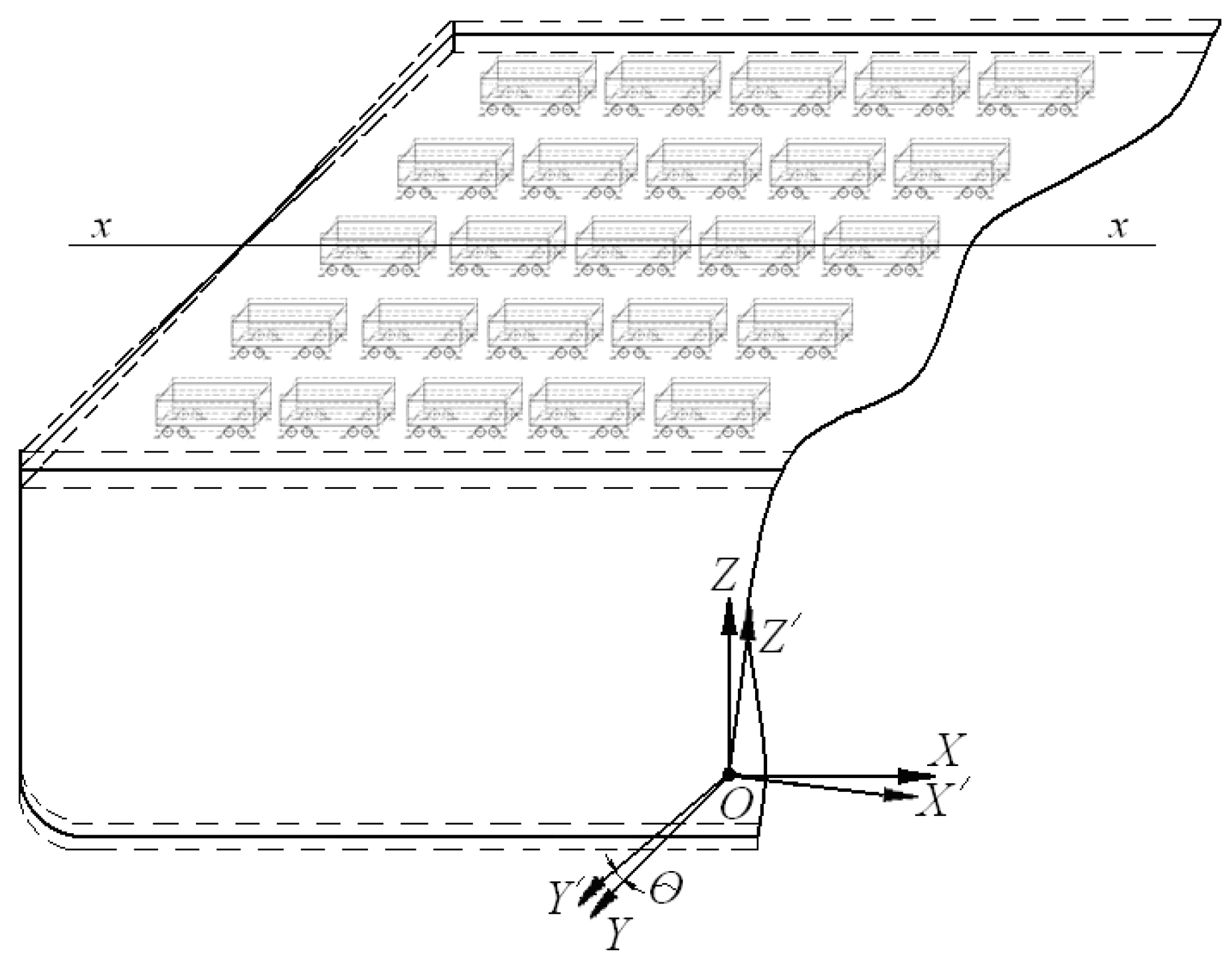

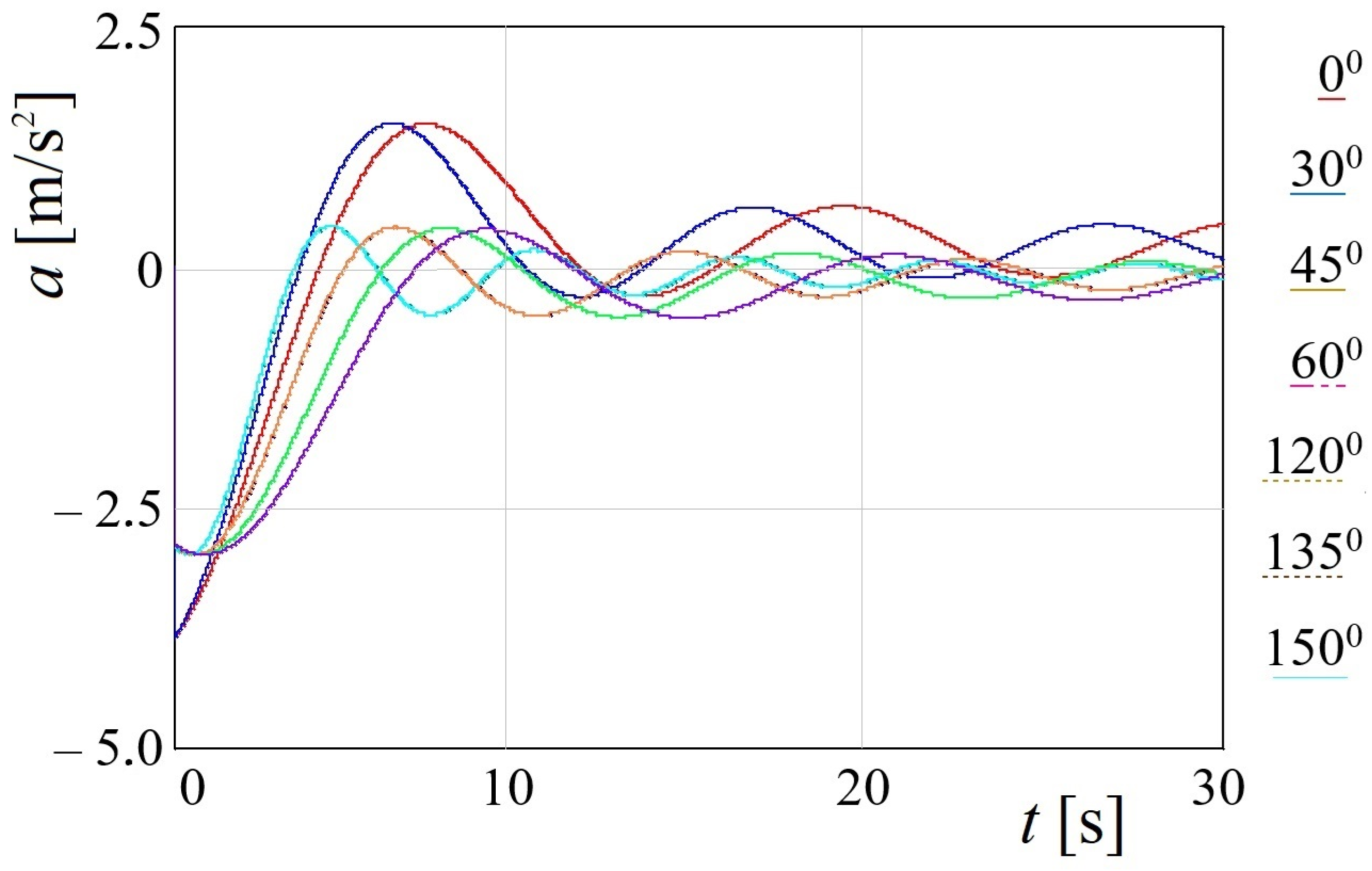

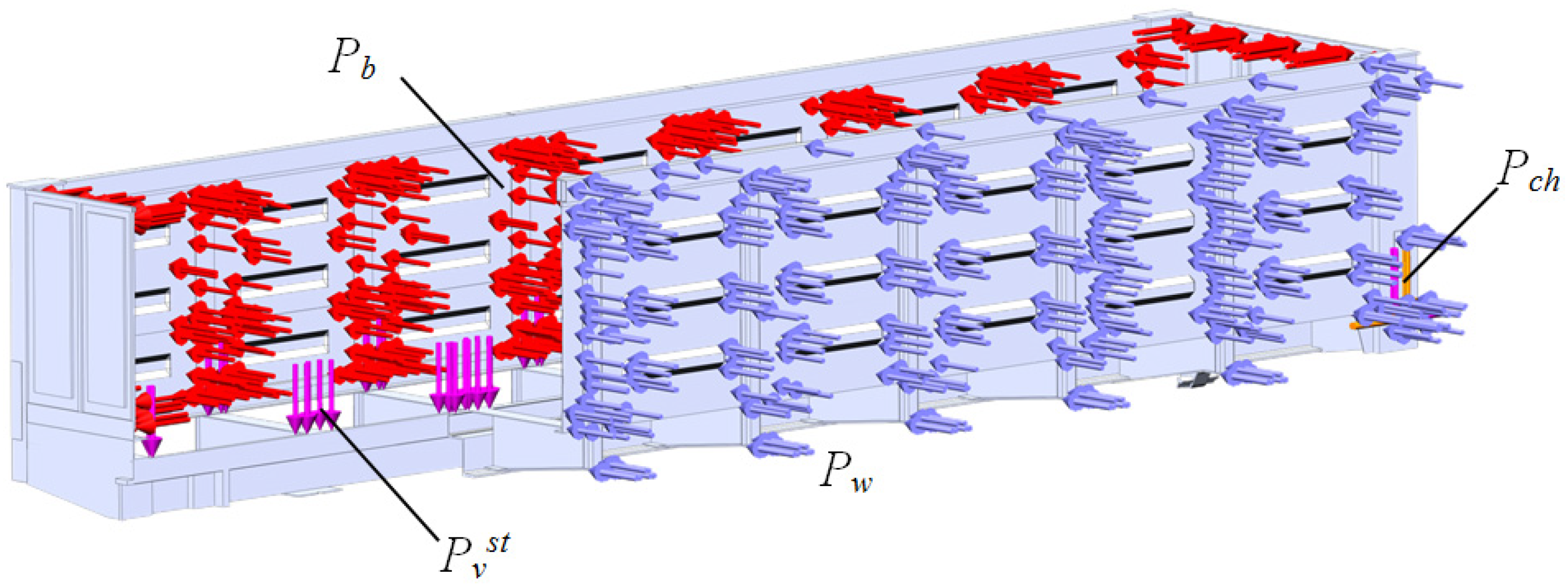
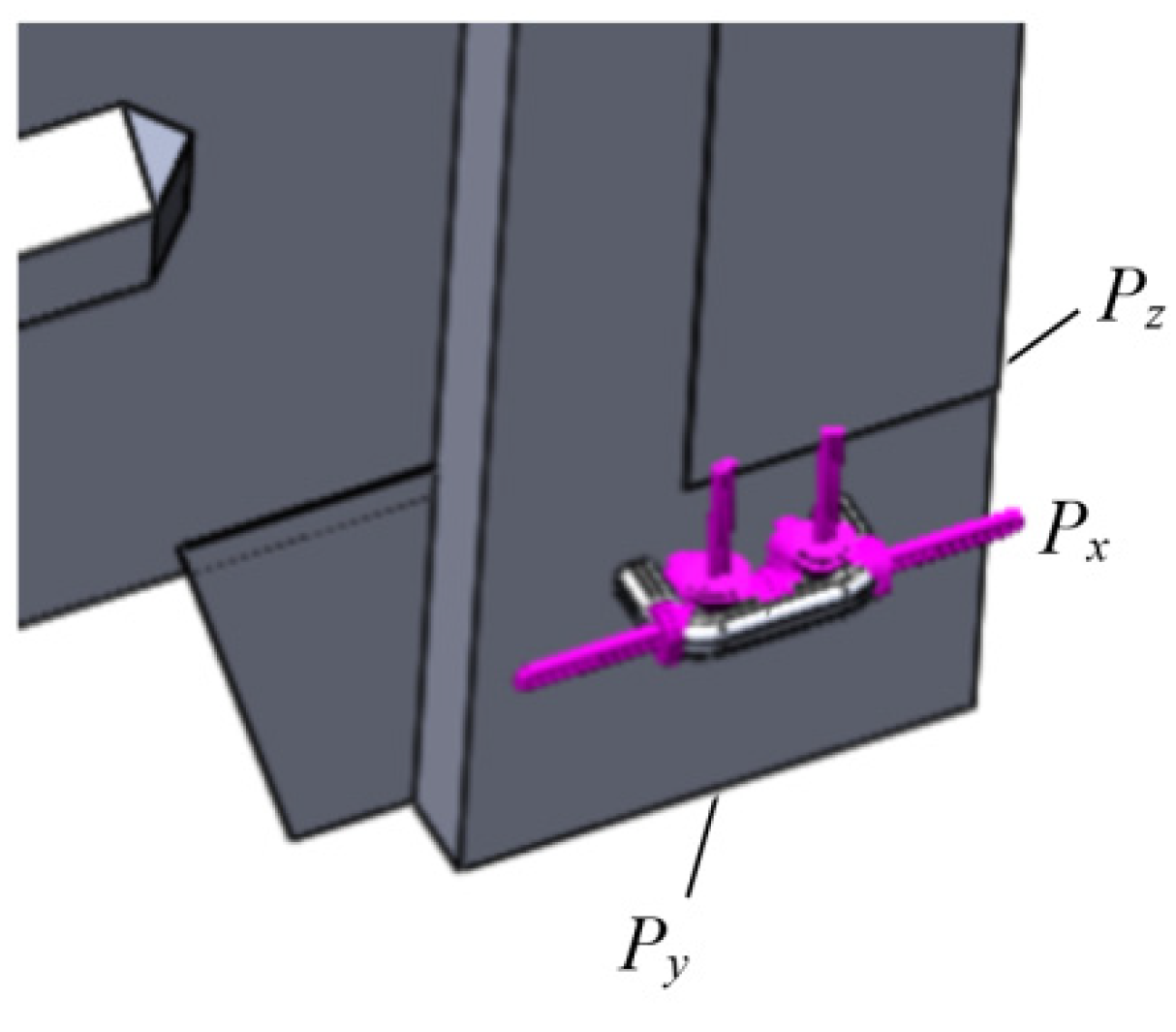
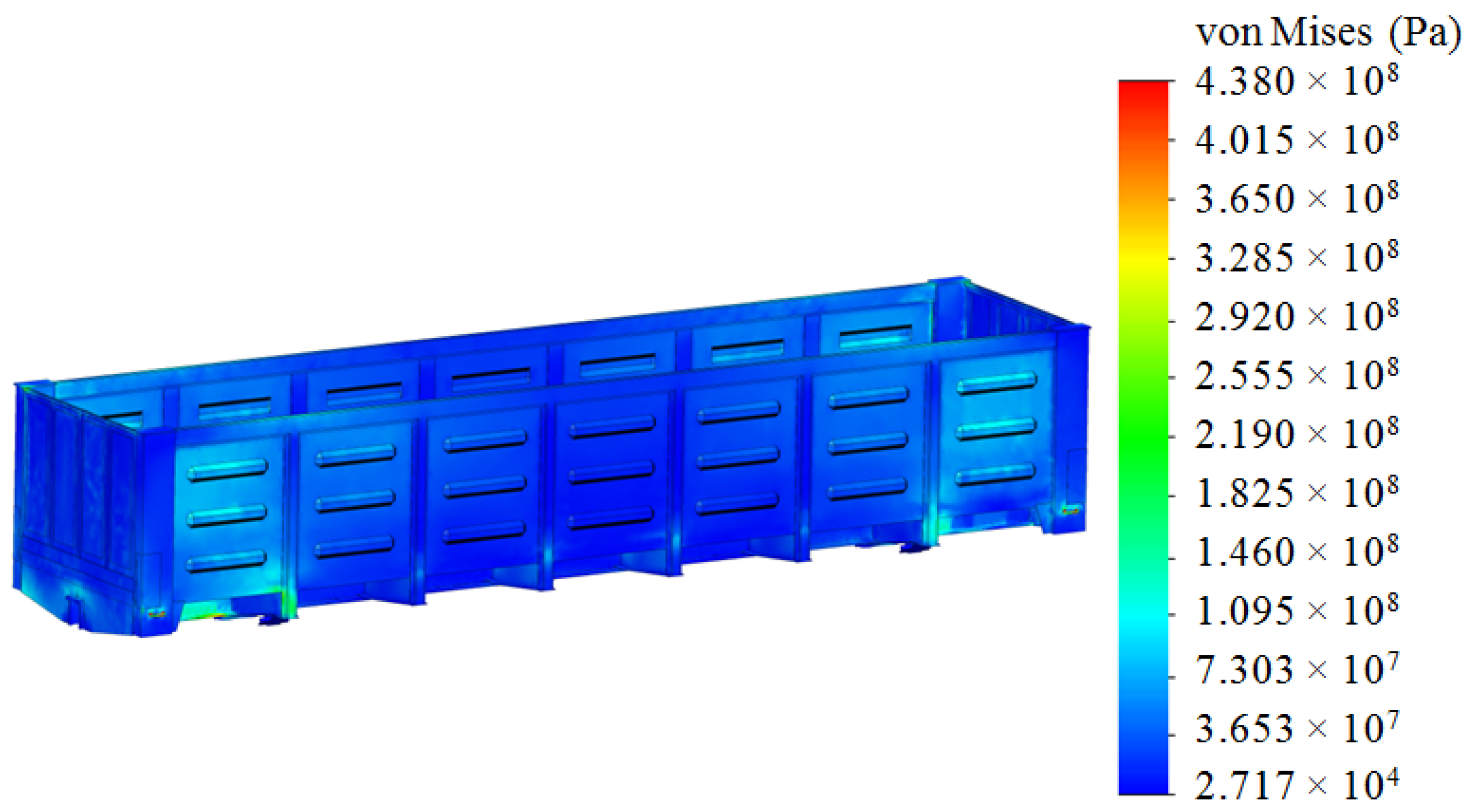



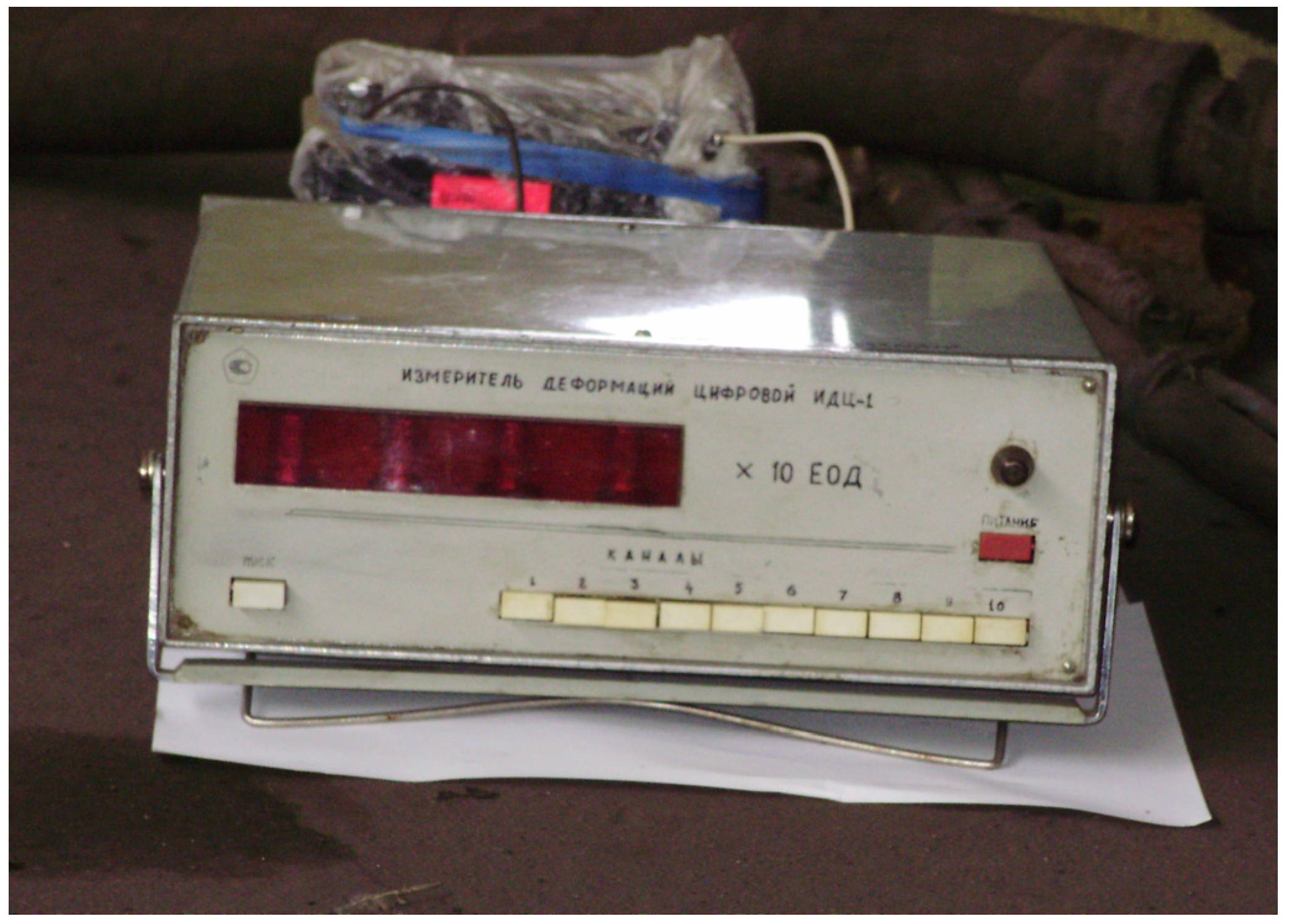
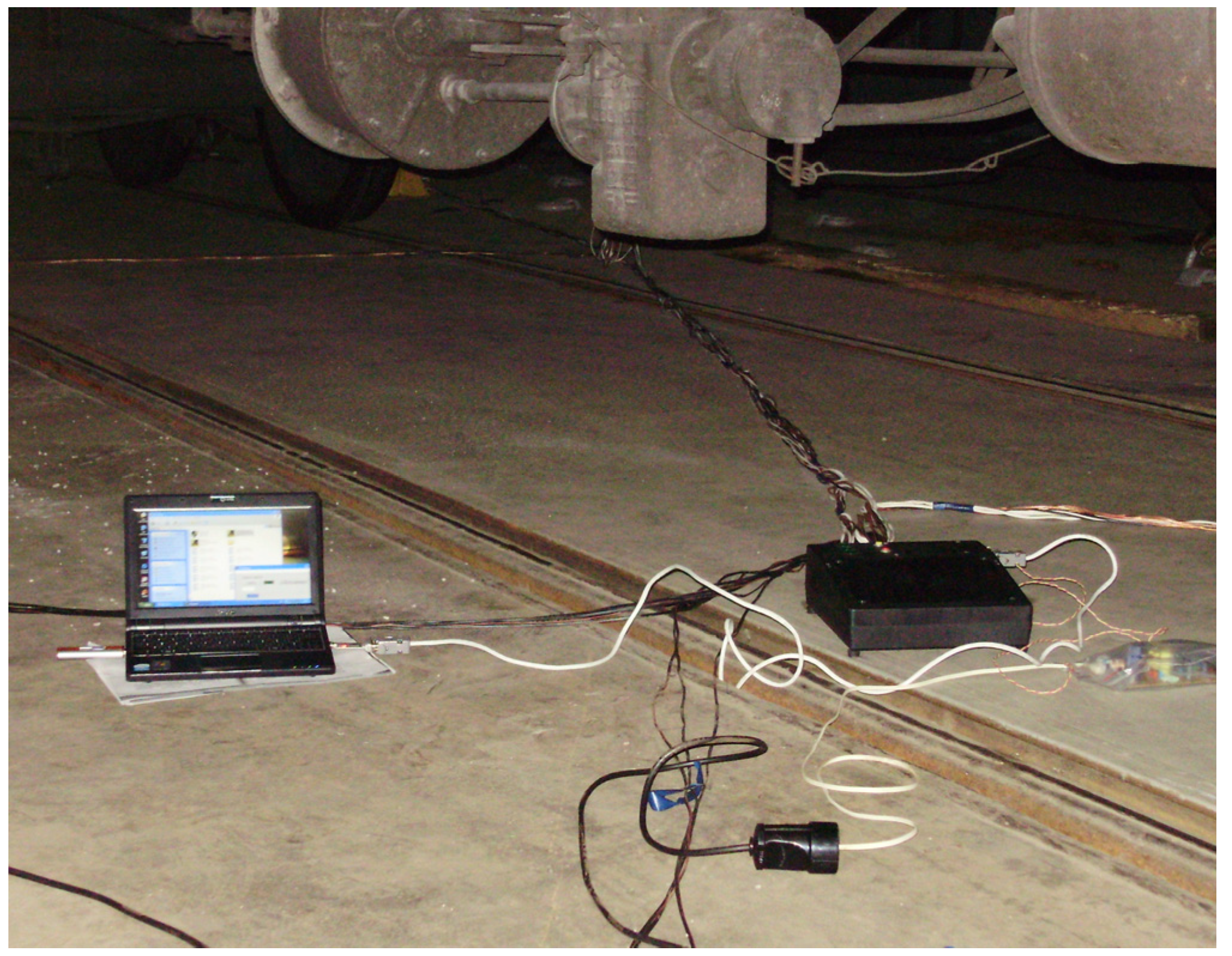
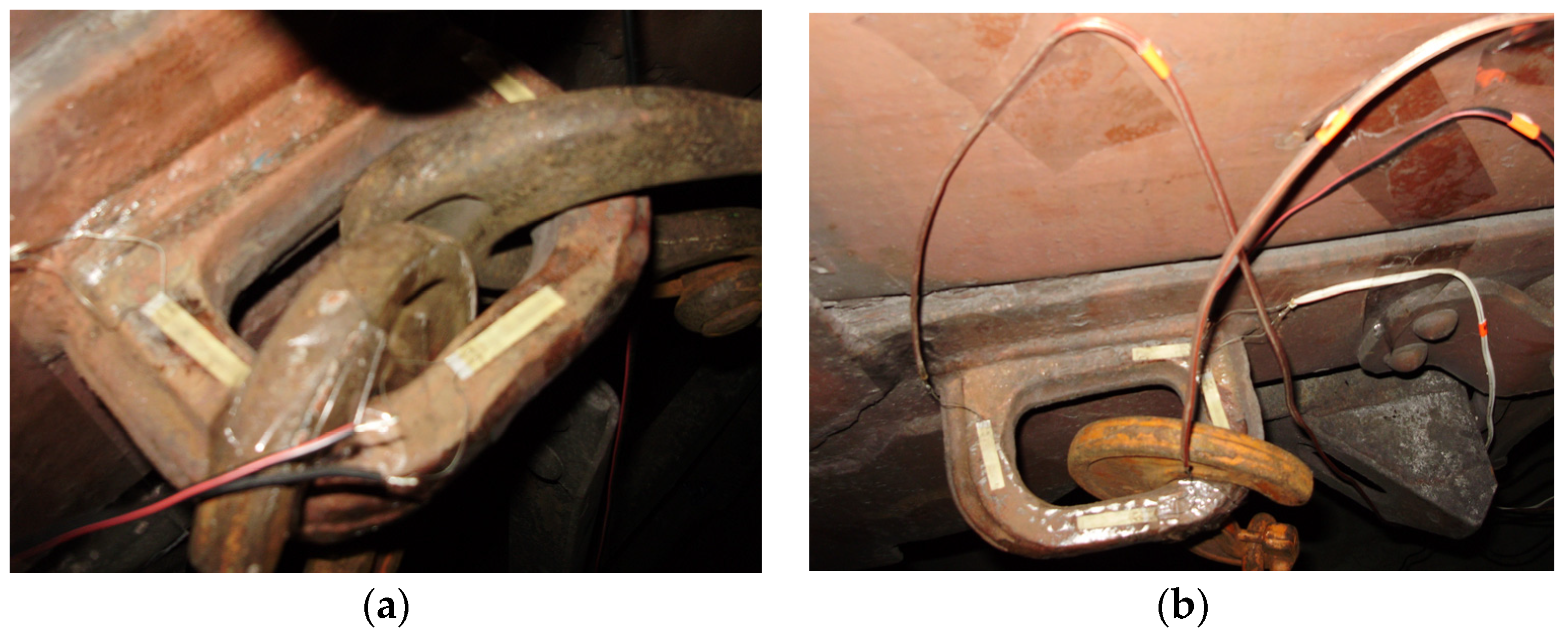
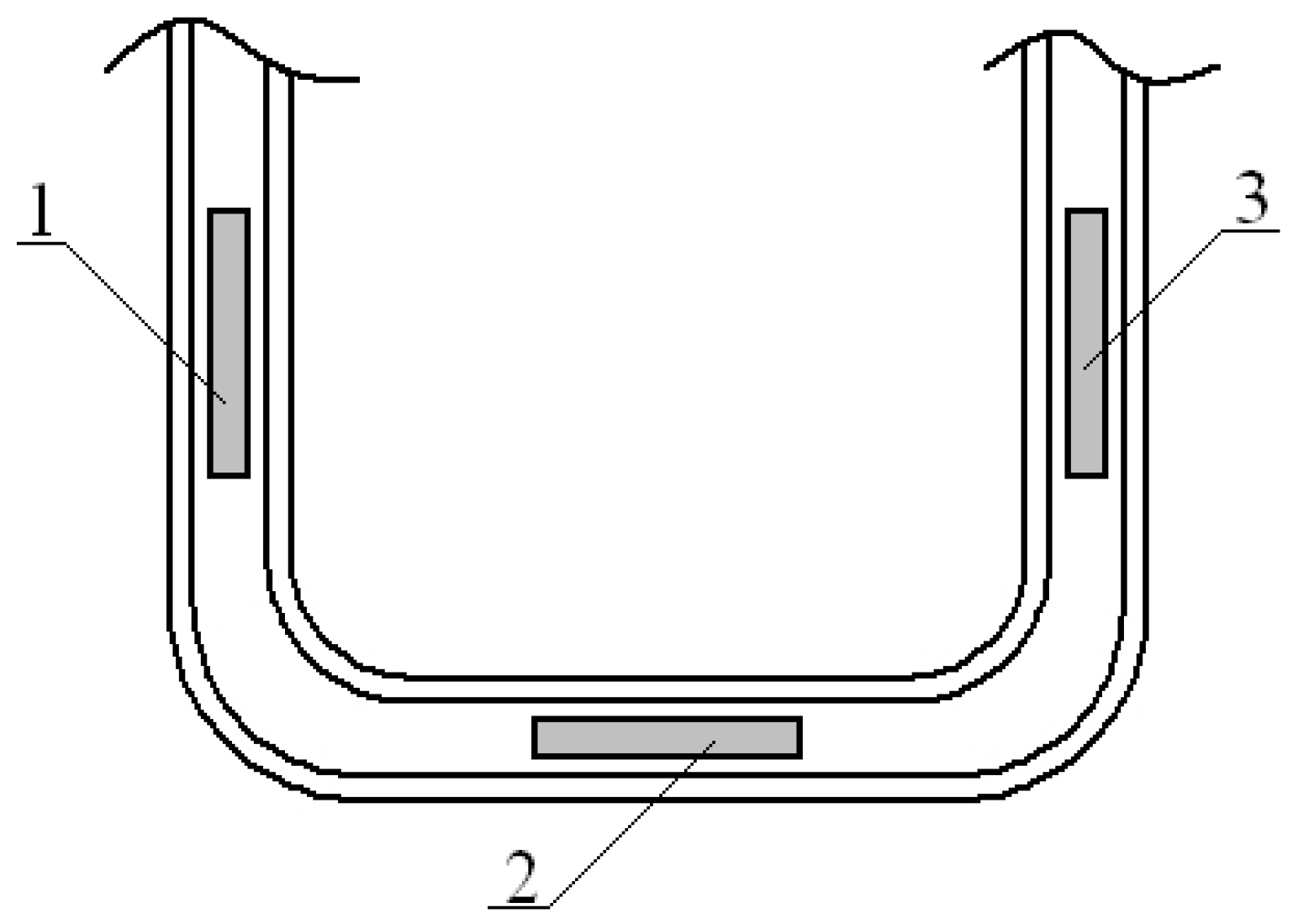
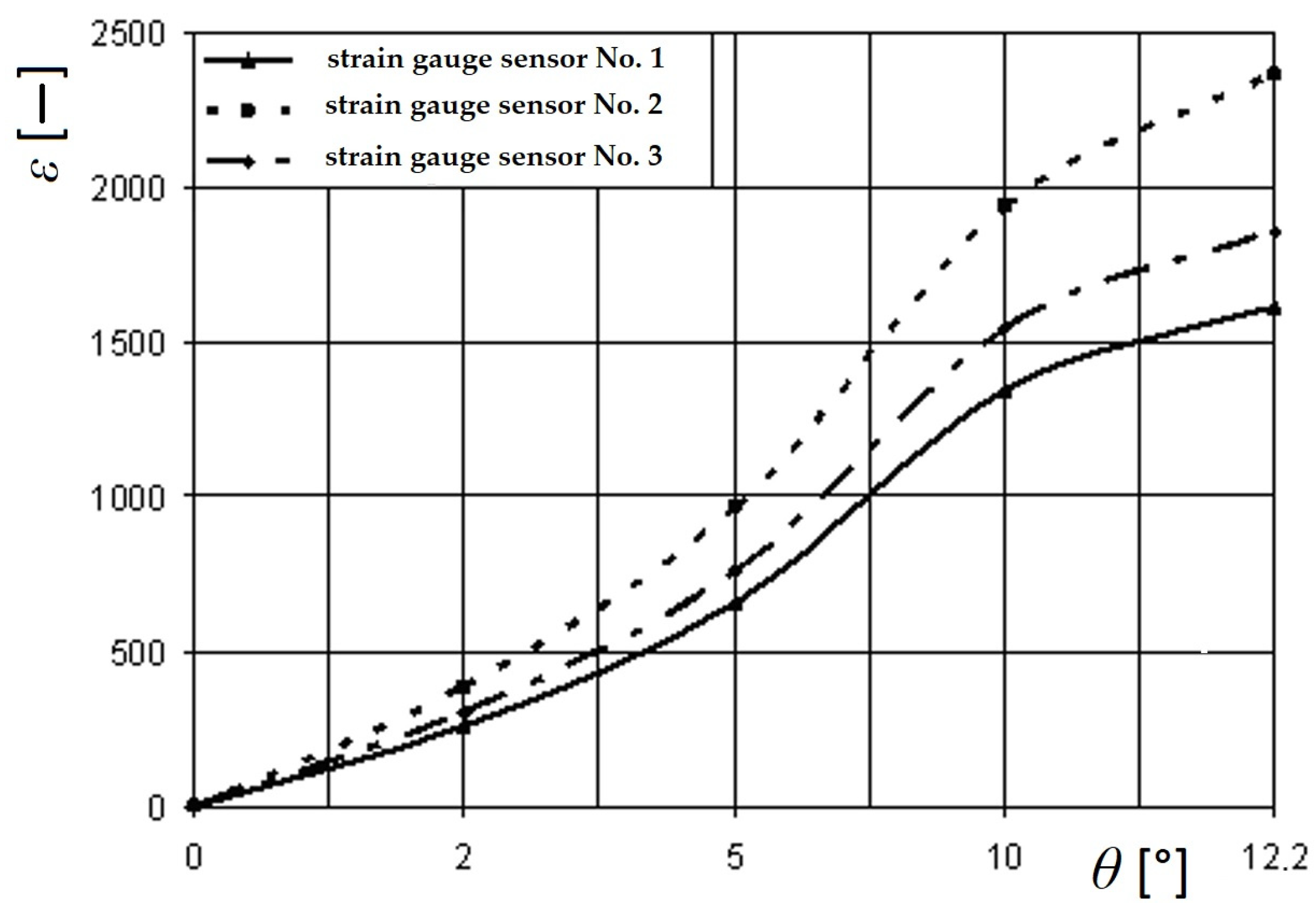
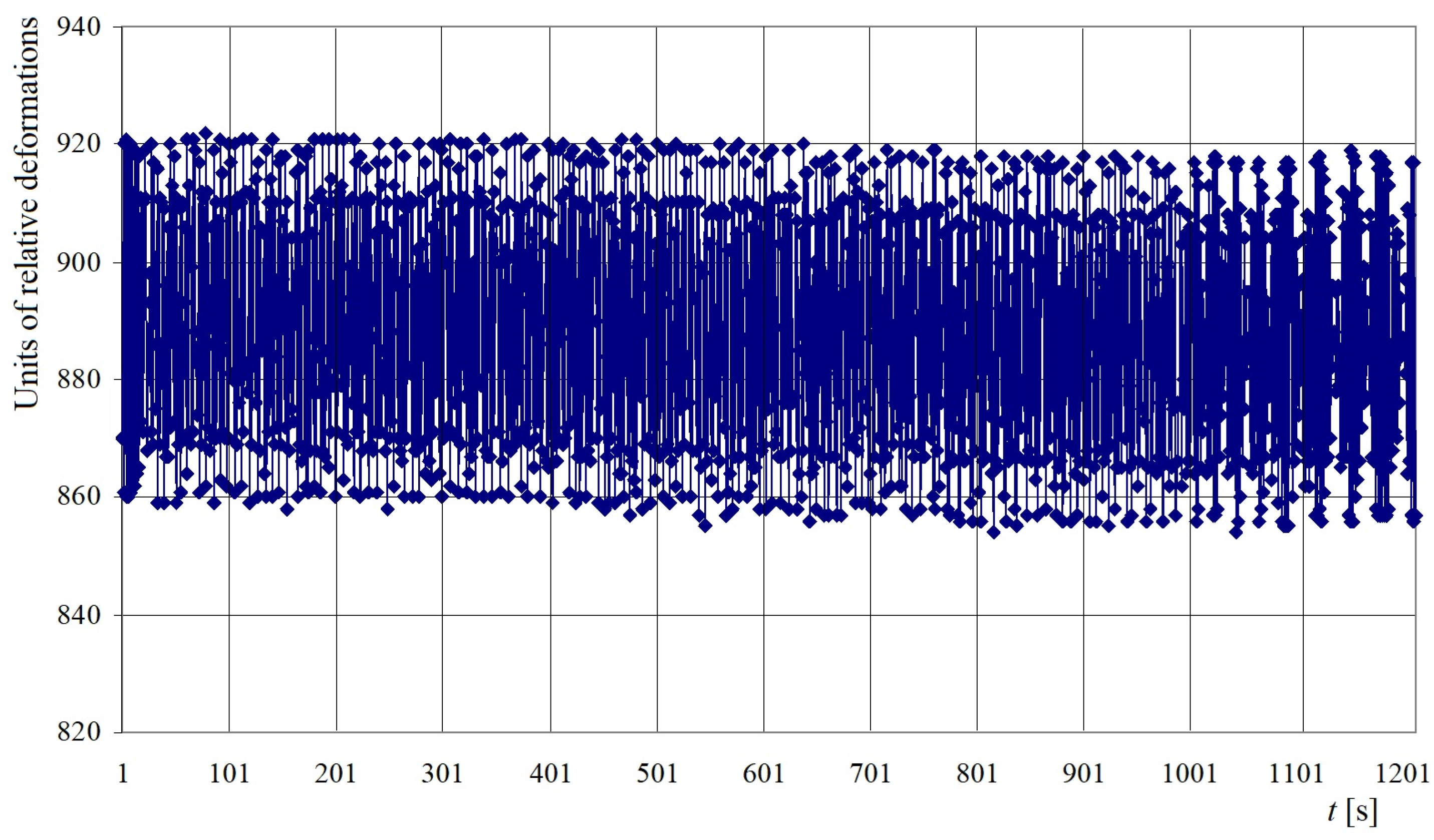
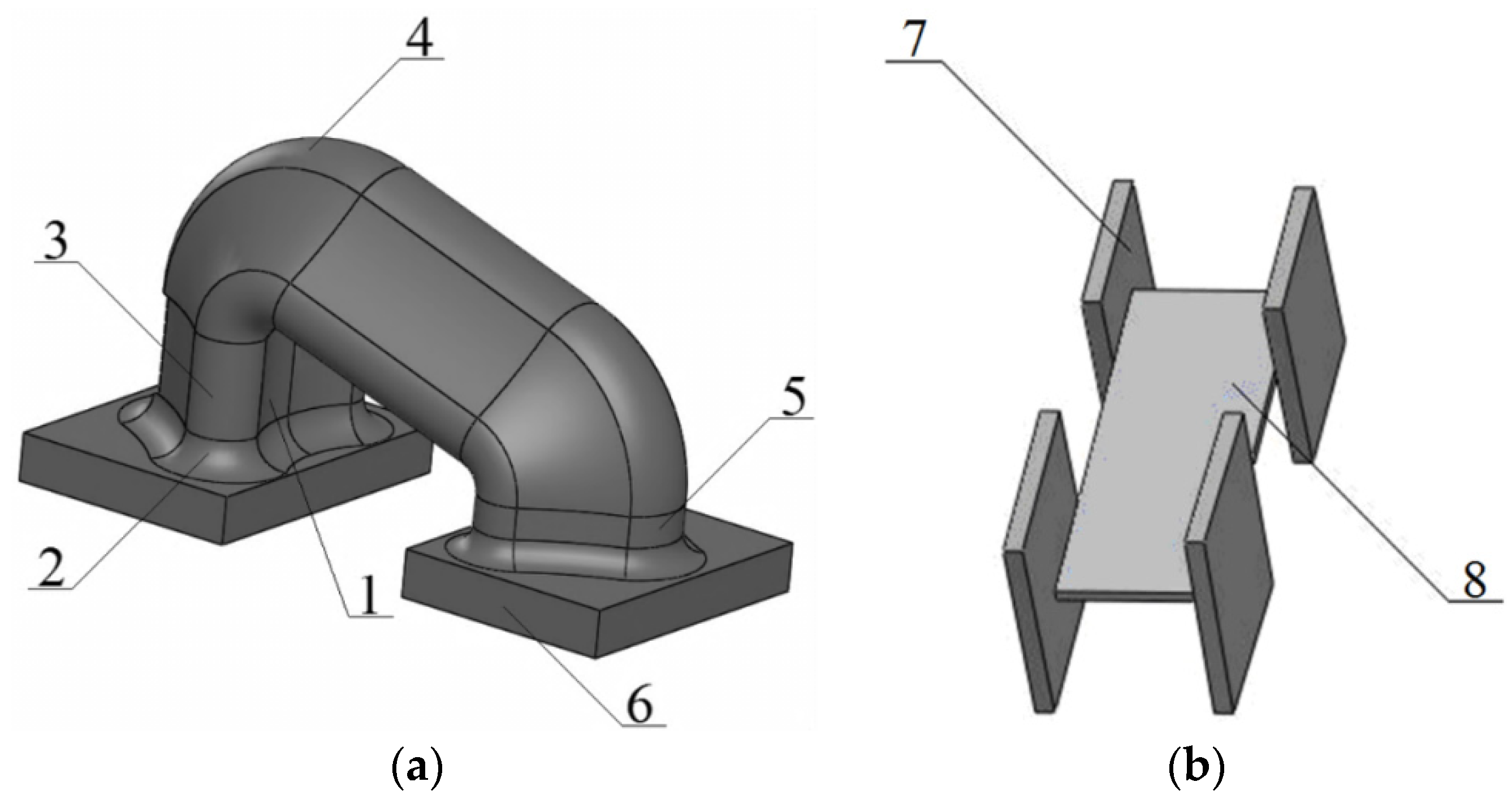
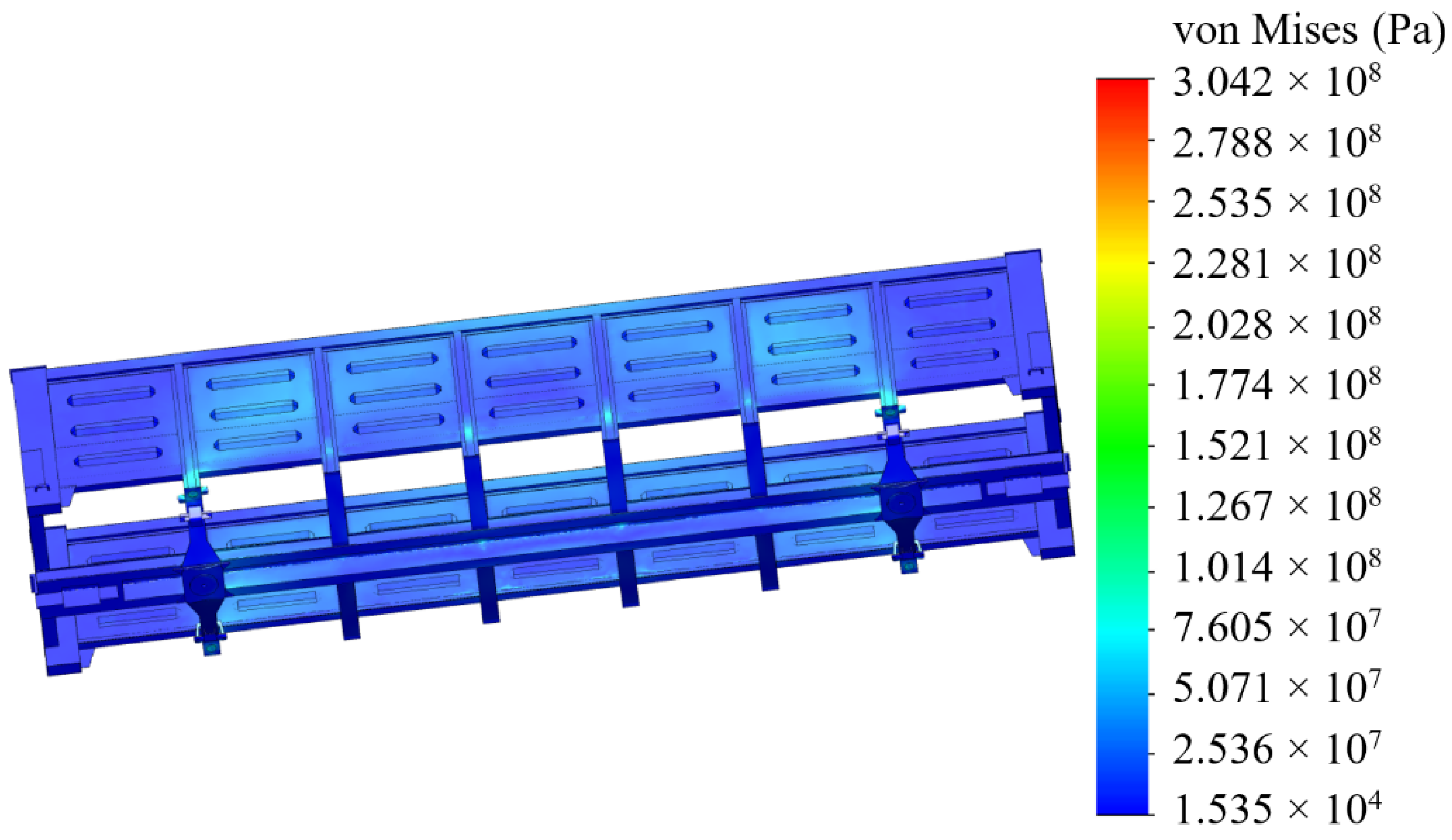
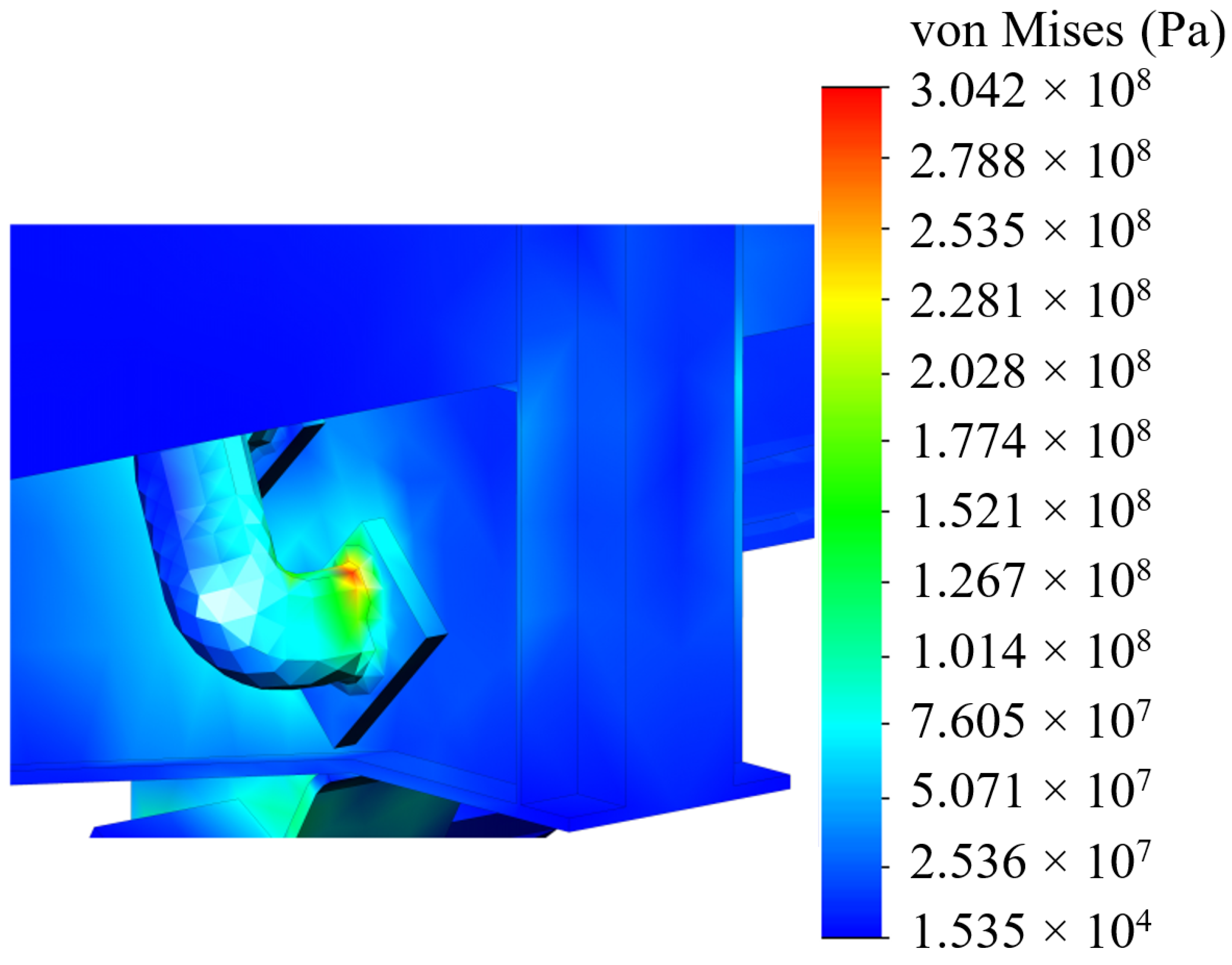
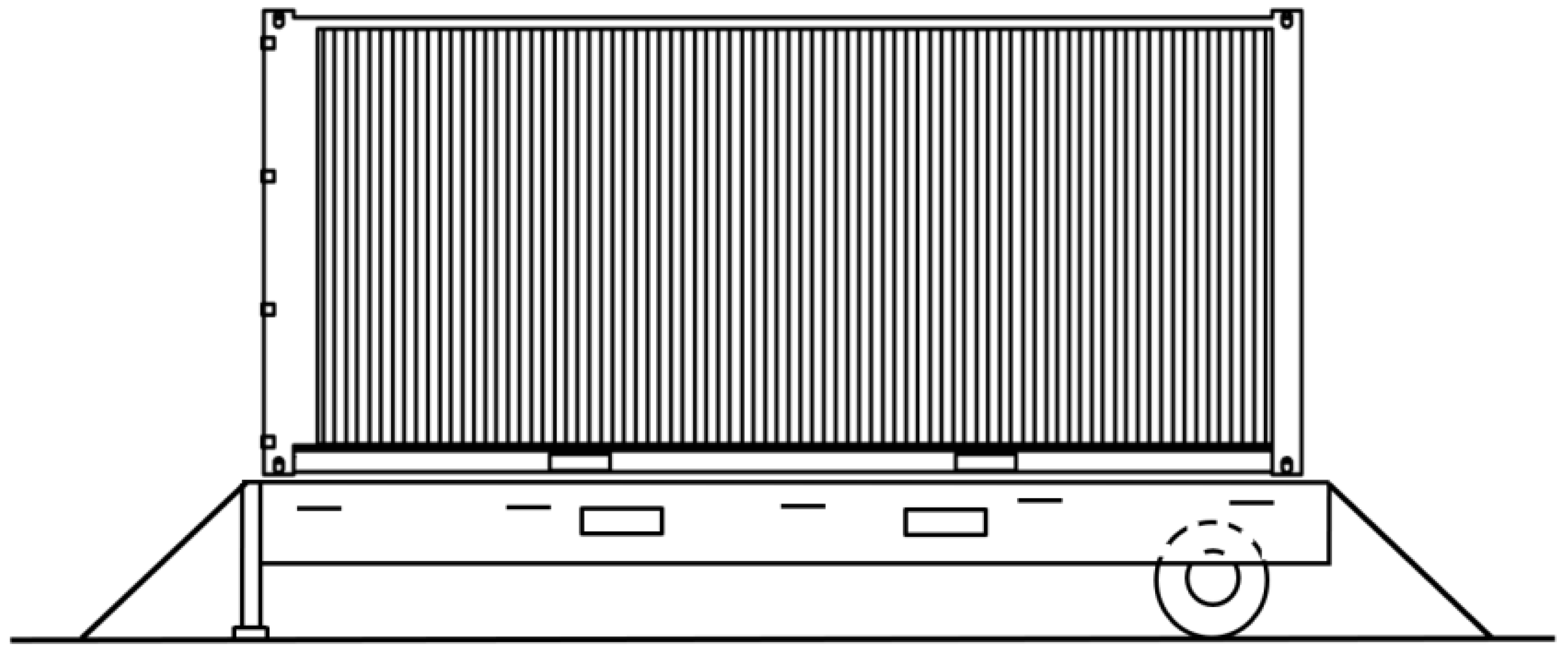
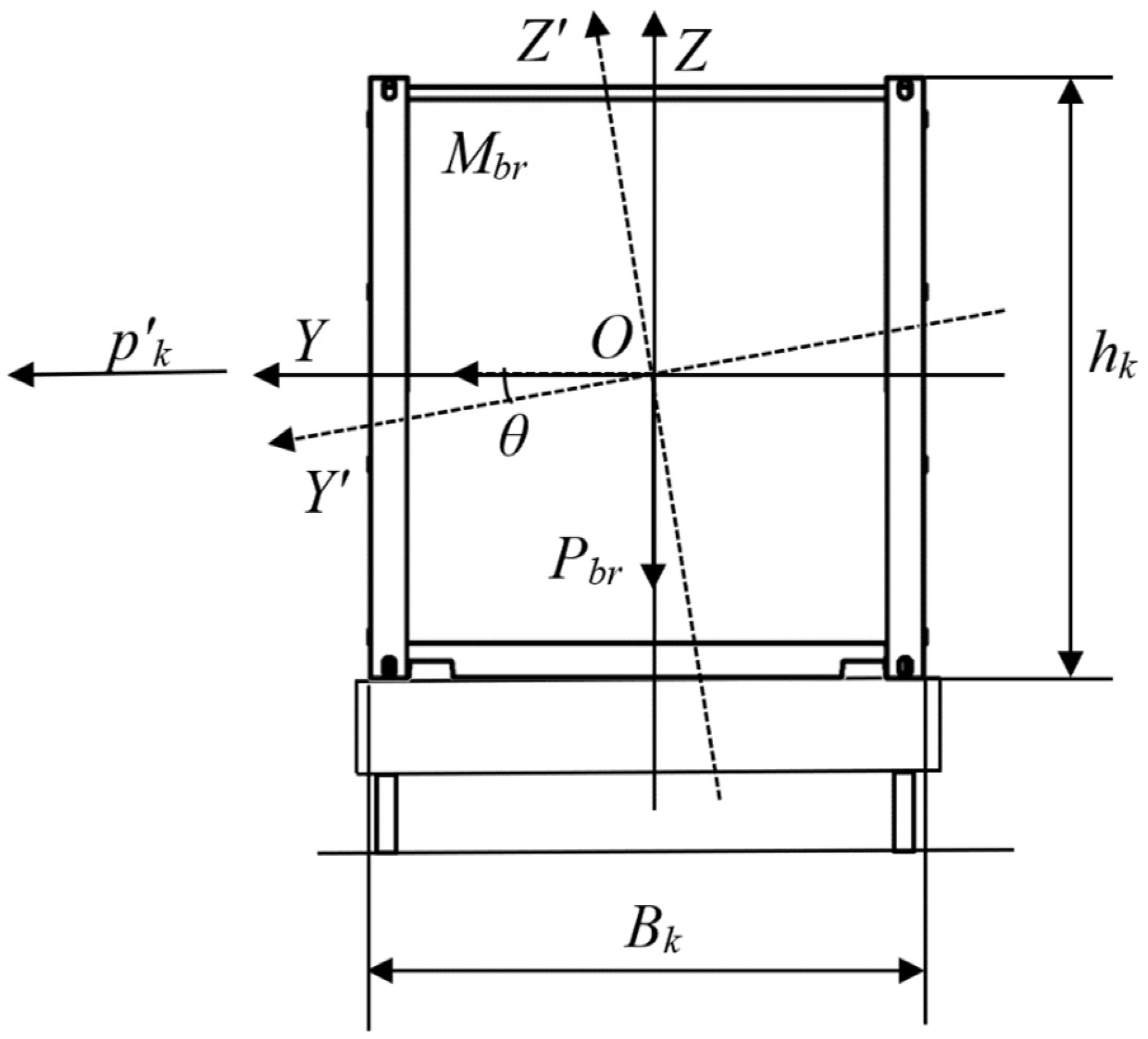

| θ [°] | Measurement Series | Strain Gauge No. | Average Value | Minimal Value | Maximal Value | Dispersion | Mean Square Deviation |
|---|---|---|---|---|---|---|---|
| 5 | 3 | 1 | 512 | 464 | 514 | 1.2 | 1.1 |
| 3 | 2 | 920.5 | 844 | 921 | 0.5 | 0.7 | |
| 7 | 3 | 612 | 585 | 641 | 0.68 | 0.82 |
Disclaimer/Publisher’s Note: The statements, opinions and data contained in all publications are solely those of the individual author(s) and contributor(s) and not of MDPI and/or the editor(s). MDPI and/or the editor(s) disclaim responsibility for any injury to people or property resulting from any ideas, methods, instructions or products referred to in the content. |
© 2023 by the authors. Licensee MDPI, Basel, Switzerland. This article is an open access article distributed under the terms and conditions of the Creative Commons Attribution (CC BY) license (https://creativecommons.org/licenses/by/4.0/).
Share and Cite
Lovska, A.; Gerlici, J.; Dižo, J.; Ishchuk, V. The Strength of Rail Vehicles Transported by a Ferry Considering the Influence of Sea Waves on Its Hull. Sensors 2024, 24, 183. https://doi.org/10.3390/s24010183
Lovska A, Gerlici J, Dižo J, Ishchuk V. The Strength of Rail Vehicles Transported by a Ferry Considering the Influence of Sea Waves on Its Hull. Sensors. 2024; 24(1):183. https://doi.org/10.3390/s24010183
Chicago/Turabian StyleLovska, Alyona, Juraj Gerlici, Ján Dižo, and Vadym Ishchuk. 2024. "The Strength of Rail Vehicles Transported by a Ferry Considering the Influence of Sea Waves on Its Hull" Sensors 24, no. 1: 183. https://doi.org/10.3390/s24010183







